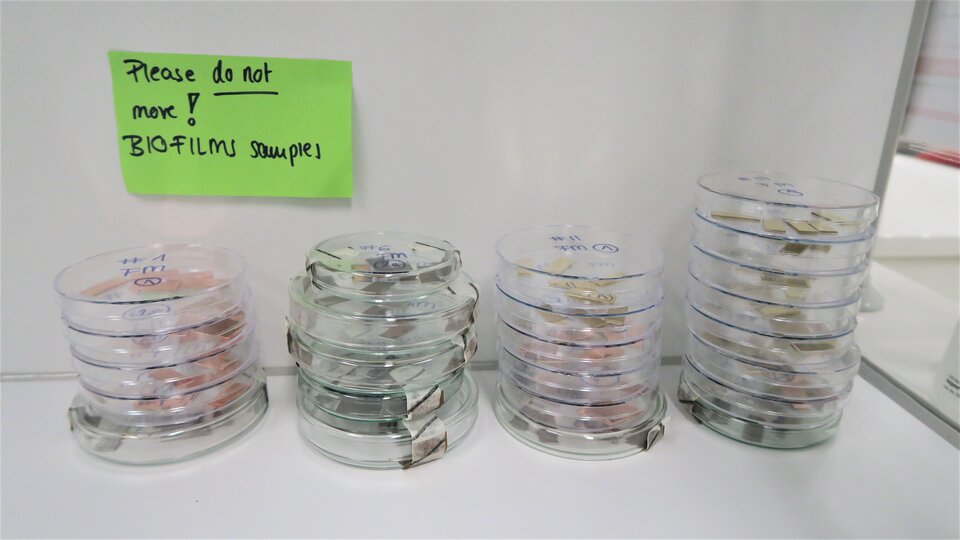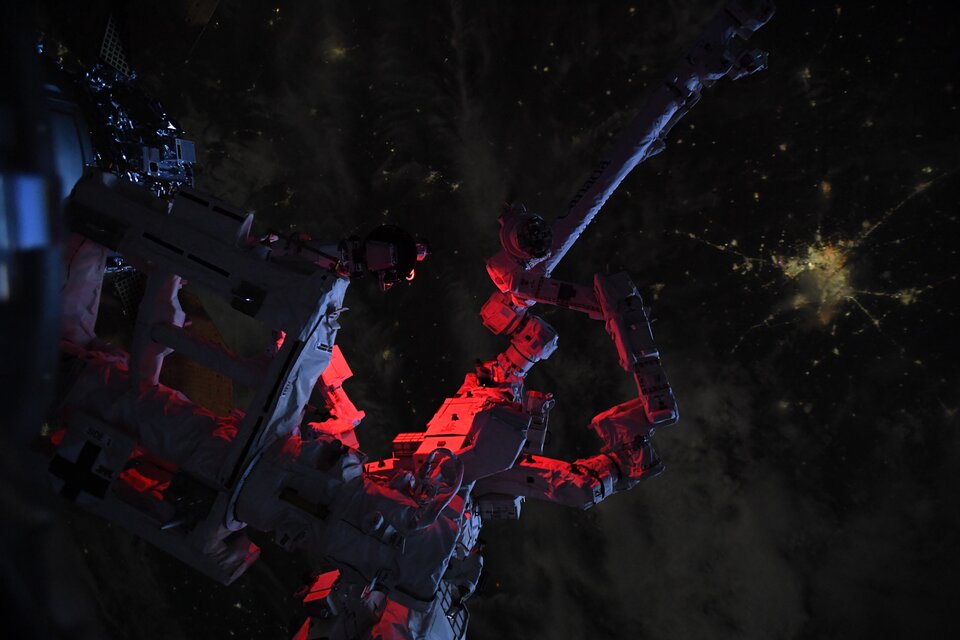August research on Space Station
As October nears, it is high time to look back at the European research conducted on the International Space Station in August. While most were on holiday or enjoying the summer, science never stops in space…
Illuminating radiation

On 18 August ESA astronaut Thomas Pesquet set up the Lumina experiment, which consists of kilometres of fibre optic coils in a small box. Light is sent through the fibres and sensors at the end of the coil measure how much light passes through. Physics and mathematicians can then calculate how much radiation interfered with the light waves to give a measure of radiation dose received. As humans explore farther from the protective atmosphere around Earth, radiation becomes more of an issue to astronaut health, and this experiment tests a new technology to monitor and record radiation.
Biofilms

On the last day of August Thomas retrieved 24 experiment containers from the Station’s research refrigerators and installed them in ESA’s Kubik incubator-centrifuge. Inside the containers are a mix of bacteria growing on different surfaces. The A. radioresistens bacteria and the S. capitis bacteria will grow on brass, copper and steel and the C. metallidurans bacteria on steel and copper.
The goal of this experiment is to see if any metals have natural anti-bacterial properties in space, but some samples will be spun to recreate gravity levels on Mars and Earth. After their flight, the bacteria biofilms as well as the surfaces they grew on will be subjected to an in-depth analysis comprising various microbiological, genetic, molecular biological, chemical and materials-science investigations. The results will help mission designers build spacecraft and outposts that are healthier and require less cleaning.
Background processes

Throughout most of the month three facilities were running to investigate natural phenomena without gravity influencing the processes. The Foams-Coarsening experiment shakes liquids into a foam while recording the results for analysis by researchers. Foam bubbles are not stable on Earth as gravity pulls on the liquids and breaks the bubbles. In space the foams stay foamy for longer, allowing researchers to analyse and study the physics behind them more easily. Creating stable foams on Earth could improve the shelf-life of food.
The CETSOL experiment running in Columbus also analyses how structures form in metals as they are processed. In August an alloy of aluminium and copper was melted, solidified and the data sent to Earth for analysis. The microscopic structure and arrangement of atoms as metals form can drastically influence their properties, understanding how the processes work could lead to better metals in our daily life.
A similar experiment started on 16 August when the electromagnetic levitator was switched on. This furnace suspends metals in mid-air or, this month, in a vacuum and later argon gas so researchers can study the casting process.
Time again

On 27 August International Space Station commander Aki Hoshide and Thomas performed their monthly TIME Perception run. This experiment charts astronauts’ reaction times during their spaceflight to identify any significant changes. Hooked up to a virtual reality headset to block external distractions, the astronauts run several simple computer-game-like reaction tests where they must judge time elapsed and press buttons as quickly as possible among other tasks.
The external facility ASIM, the space-based storm hunter, was active through most of the month, monitoring thunderstorms from above. It was deactivated for the arrival of Cygnus NG-16 on 12 August. The facility’s highly sensitive light detectors were also repurposed to inspect the lights on the Space Station’s robotic arm – a seamless switch from science to maintenance!















 Germany
Germany
 Austria
Austria
 Belgium
Belgium
 Denmark
Denmark
 Spain
Spain
 Estonia
Estonia
 Finland
Finland
 France
France
 Greece
Greece
 Hungary
Hungary
 Ireland
Ireland
 Italy
Italy
 Luxembourg
Luxembourg
 Norway
Norway
 The Netherlands
The Netherlands
 Poland
Poland
 Portugal
Portugal
 Czechia
Czechia
 Romania
Romania
 United Kingdom
United Kingdom
 Slovenia
Slovenia
 Sweden
Sweden
 Switzerland
Switzerland



























